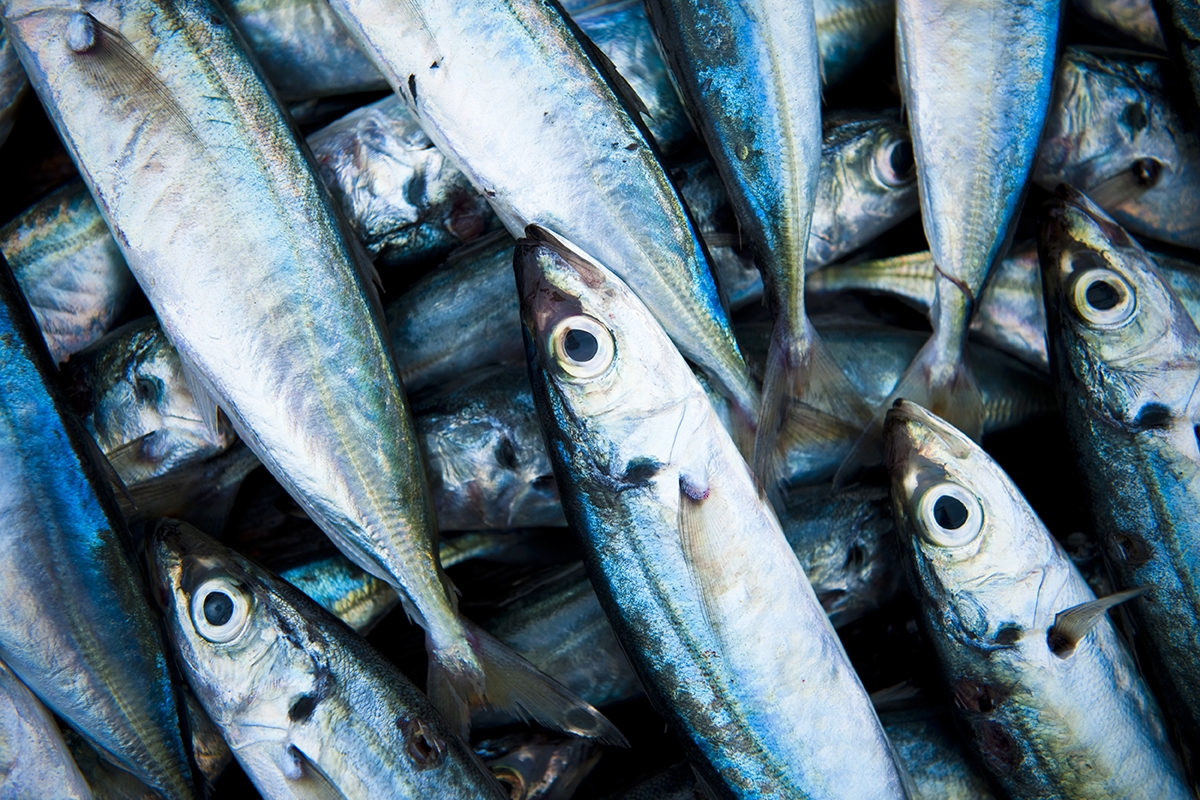
Fish, a nutritional banquet.
Regular intake of fish brings benefits to human health. The ideal is to consume this food at least twice a week, especially cold water fish, such as anchovies, tuna, cod, corvina, hake salmon, sardines, among others.
According to recent data from the World Health Organization (WHO), cardiovascular diseases are the leading cause of death in Brazil. Obesity, diabetes mellitus, dyslipidemias and cardiovascular diseases are examples of chronic noncommunicable diseases that today affect even children. The omega-3 and omega-6 polyunsaturated fatty acids are found in fish fat from deep and cold waters and are recognized for their preventive action against cardiovascular diseases.
Within the omega-3 family, we find the docosahexaenoic fatty acids (EPA) docosahexaenoic (DHA), which are called "essential" because they are not produced by the human body and must be obtained through diet. They aid in important functions in the early stages of human development because they are an integral part of cell membranes, assist in the production of hormones that regulate blood clotting and contraction and relaxation of arterial walls, and regulate genetic functions.
In addition, fish stand out nutritionally from other animal foods because they contain large amounts of fat-soluble vitamins A and D, B vitamins and minerals such as calcium, phosphorus, iron, copper, selenium and, in the case of fish of salt water, iodine. Still, in relation to their proteins, the fish contain all the essential amino acids for the human being (lysine, methionine and cysteine) and their proteins are very bioavailable, being easily used by our organism.
Regular intake of fish brings benefits to human health. The World Health Organization (WHO), the Food and Agriculture Organization of the United Nations (FAO) and the American Heart Association advise that it is best to consume this food at least twice a week, especially cold water fish , such as anchovies, tuna, cod, corvina, hake salmon, sardines, among others. This recommendation is especially important for pregnant women and women planning to become pregnant. It is known that the fetal availability of essential polyunsaturated fatty acids, such as omega 3, depends on maternal food intake. Therefore, consumption during gestation is extremely important for the fetus as it assists its growth and development in the long run. From the third trimester, the baby needs a constant supply of DHA for the formation of the brain and other parts of the nervous system. In addition, fish intake reduces morbidity and mortality related to prematurity and newborn weight, as well as reducing symptoms of postpartum depression.
In Brazil, consumption is still very low, with the exception of the North and Northeast, although consumption in the Northeast does not reach half the consumption in the North. Second, the Statistical Bulletin of Fisheries and Aquaculture (Brazil 2010), consumption in Brazil is around 9 kg / per capita / year, and the WHO recommended is 12 kg / per capita / year.
The sardine is among one of the most commercialized fish among Brazilians, due to its large-scale fishing and its low cost. It belongs to this order, the little Manjuba, served fried as a snack in the kiosks by the sea. The legitimate fish of the RN fashion is prepared with Cioba or Pargo. Mullet is another very popular fish in the Northeast. The Meca Fish or Sword is found in all Brazilian coast and known like the "picanha of the sea" by the tenderness of its meat. The tuna stands are other varieties very used in northeastern cuisine. In addition to several delicious fish that we can mention here: needle, whiting, corvina, sea gold, grouper, hake, sea bass ...
In addition to the choice of the most nutritious species, it is necessary to be prepared in order not to lose vitamins and so that the food does not gain fat, because exposure to high temperatures during frying can reduce the beneficial properties of fish fat. It is best to choose roasted, cooked or grilled preparations. It is a difficult mission to bring a fish recipe here to readers so experienced in this specialty !!! So today we leave a very tasty recipe, besides being nutritious and sustainable for you to taste the cioba, without frying it!
By Andreia Cristina. Master in Food and Nutrition - CRN 3/19360. Text originally published in Bora Magazine - issue 13 - Aug / Sep 2015
Recipe: Cioba stuffed with cabbage stalks and banana peel
Ingredients:
2kg Clean cioba without the spine
1 lemon juice
2 to 3 sage leaves (or other herb of your choice: cilantro, parsley, chives ...)
Salt and black pepper to taste
Olive oil
1 banana leaf
Filling:
1 tablespoon sunflower oil
1 tablespoon extra virgin olive oil
2 cups toasted manioc flour
Slices of a packet of chopped organic cabbage
Bark of three chopped bananas
2 tablespoons raisins of white and black grapes
1 clove garlic, peeled and crushed
Salt, pepper, coriander, parsley to taste
Method of preparation:
In a form place the fish and season with the lemon, the herb of your preference, the salt and the pepper. Reserve.
Saute the garlic, add the banana peels and stems and saute until soft.
Add the manioc flour, raisins and seasonings of your choice.
Turn off the heat and drizzle with a little olive oil.
Fill the cioba with the farofa and wrap it in a banana leaf.
Put to roast, for about 25 minutes. Open, drizzle with olive oil and let brown.
If you want, put some shrimp to decorate and that's it!







 ESPAÑOL
ESPAÑOL
 PORTUGUES
PORTUGUES